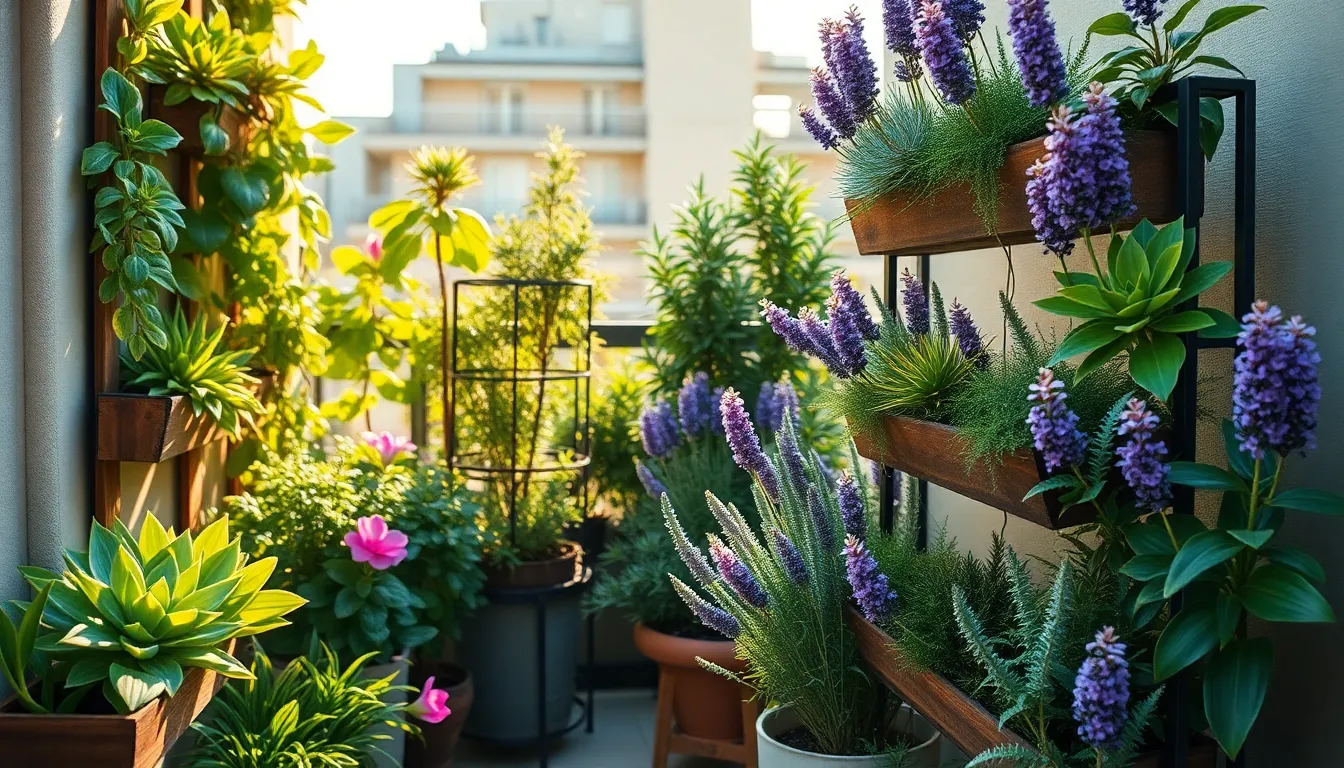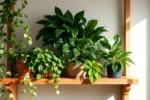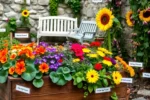Welcome to the delightful world of apartment gardening, where every inch of space can bloom with beauty and life! Whether you’re just starting your green journey or you’re a seasoned plant enthusiast, our guide to “7 Space-Saving Perennial Ideas for Apartments” is crafted to inspire and equip you with the tools for success. In the cozy confines of your home, you can create a lush, everlasting haven that celebrates the joys of gardening without the need for a sprawling backyard.
Imagine the satisfaction of nurturing a perennial garden that not only survives but thrives in your apartment. These carefully selected plants promise to add vibrant textures and colors to your living space, all while requiring minimal maintenance. With the practical advice found in this guide, you’ll discover how easy it is to integrate nature into your everyday life and enjoy the profound rewards that come with cultivating your green oasis. Let’s embark on this exciting journey together, confident that you can transform your apartment into a verdant retreat that flourishes year after year.
Choose Compact Perennial Varieties

Selecting compact perennial varieties is a smart way to maximize space in apartment gardens. These smaller plants are perfect for containers and can thrive in limited areas without sacrificing beauty or productivity.
When choosing compact perennials, look for species that naturally grow smaller or have been bred for reduced size. Miniature roses, dwarf lavender, and compact hostas are excellent options that offer vibrant colors and textures.
Pay attention to the specific growing conditions each plant requires to ensure success. Most compact perennials prefer well-draining soil, so consider using a mix of potting soil and perlite to enhance drainage.
Watering needs can vary greatly among different compact perennials. Generally, it’s best to allow the top inch of soil to dry out between waterings, which typically means watering once or twice a week, depending on the climate and the plant’s specific needs.
For those with more experience, experiment with companion planting to maximize your space and create a dynamic display. Pairing perennials like dwarf astilbe with creeping thyme can create a visually appealing yet compact garden arrangement.
Utilize Vertical Planting Systems
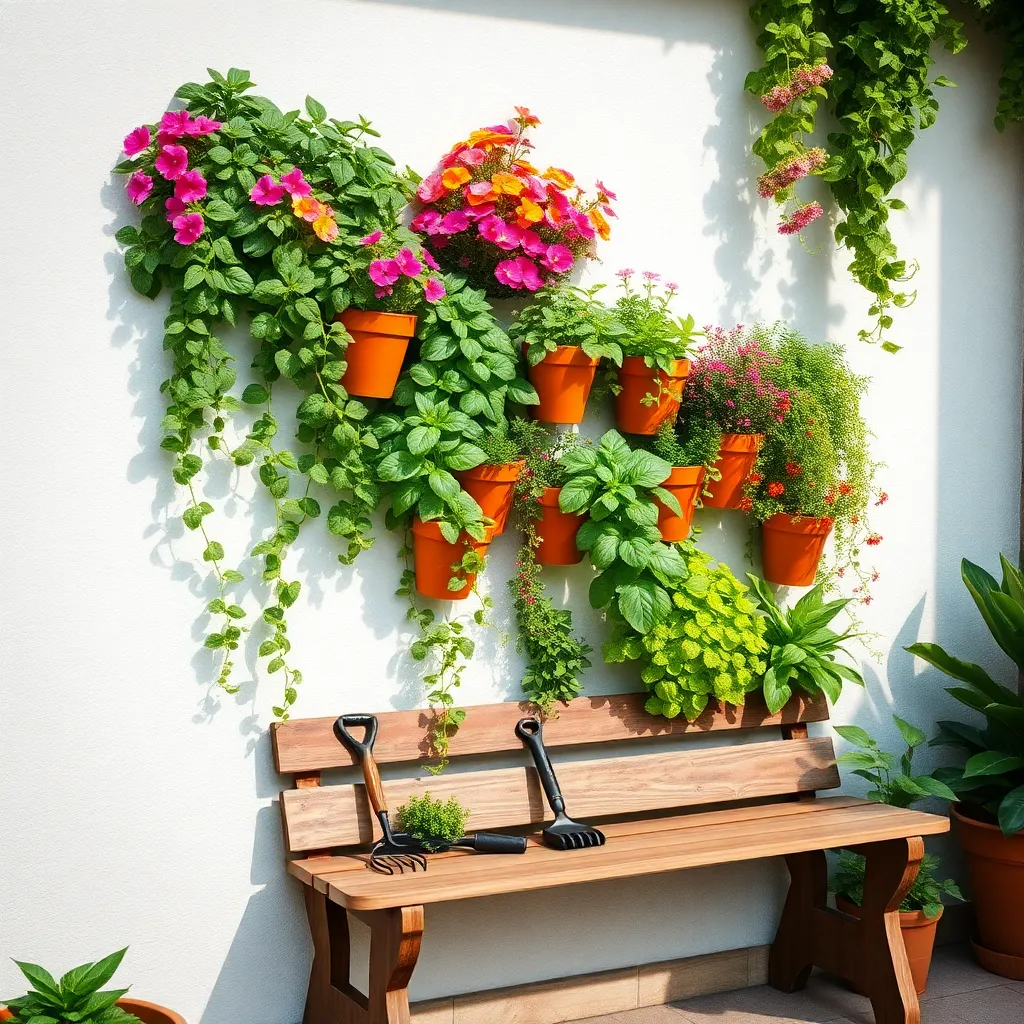
Vertical planting systems are a fantastic way to maximize space in apartments while adding lush greenery to your living space. Consider using a vertical planter or wall-mounted pockets, which can be easily installed on balconies or sunny walls indoors.
To get started, choose perennials that thrive in compact spaces, such as succulents, ferns, or small flowering plants like lavender. These plants not only add beauty but also offer the benefit of low maintenance, making them perfect for busy apartment dwellers.
Ensure your vertical garden receives adequate sunlight by placing it near a south-facing window or balcony. It’s crucial to monitor the moisture levels regularly, as vertical systems can dry out quickly, so water consistently but avoid overwatering.
For beginner gardeners, using a lightweight potting mix that retains moisture can help maintain healthy plant growth. More experienced gardeners might experiment with creating their own potting mixes, incorporating perlite or vermiculite for better aeration and drainage.
Finally, fertilize your vertical garden every 4-6 weeks during the growing season to ensure your perennials continue to thrive. Using a balanced, water-soluble fertilizer will provide the essential nutrients needed for robust growth and vibrant blooms.
Opt for Hanging Planter Solutions

Hanging planters are an excellent way to maximize space in an apartment and add visual interest to your indoor garden. They allow you to grow a variety of perennials that thrive when given room to cascade, like ivy and trailing fuchsias.
To start, choose planters equipped with proper drainage holes to prevent waterlogging, which can damage plant roots. For most perennials, a lightweight potting mix that retains some moisture yet drains well is ideal, such as a mix containing peat moss and perlite.
When selecting plants for your hanging planters, consider how much light each spot receives during the day. Many shade-loving perennials, such as ferns and hostas, perform well in lower light conditions commonly found near shaded windows or indoor spaces.
Watering is crucial when plants are suspended, as they tend to dry out faster than those in ground pots. Check the soil moisture regularly, and water when the top inch of soil feels dry, ensuring the water reaches the roots thoroughly.
For advanced gardeners, consider using a self-watering system or a drip irrigation setup to maintain consistent moisture levels. Additionally, rotating your hanging planters periodically can ensure even light exposure, promoting balanced growth.
Group Plants for Shared Sunlight

Creating a thriving apartment garden is all about maximizing the use of available sunlight. By grouping plants with similar light needs, you can create a harmonious growing environment that benefits all. For example, place sun-loving plants like lavender and rosemary together to ensure they receive the bright light they crave. This strategic grouping not only optimizes their growth but also simplifies maintenance.
In addition to considering sunlight needs, it’s essential to think about watering requirements. Grouping plants with similar moisture preferences helps maintain consistent soil conditions and prevents over or under-watering. Succulents and cacti, for instance, should be placed together since they thrive on infrequent watering and well-draining soil. This approach reduces the risk of root rot and keeps plant care straightforward.
For a more advanced technique, consider using tiered plant stands or shelves to stack plants with varying light needs. This allows you to place sun-loving plants on the top tier and shade-tolerant varieties like ferns or pothos below. By doing so, you can maximize vertical space and cater to diverse plant preferences without sacrificing light exposure for any member of your plant collection. Experiment with different plant combinations to find the perfect balance for your space.
When setting up your plant groups, pay attention to their growth habits and sizes. Larger plants can provide a natural canopy for smaller, shade-loving species, creating a mini-ecosystem in your apartment. For example, place a tall snake plant next to smaller, more delicate herbs to offer them some protection from direct sunlight. This not only enhances the aesthetic appeal of your indoor garden but also encourages healthy and robust plant growth.
Incorporate Multi-Purpose Plant Stands
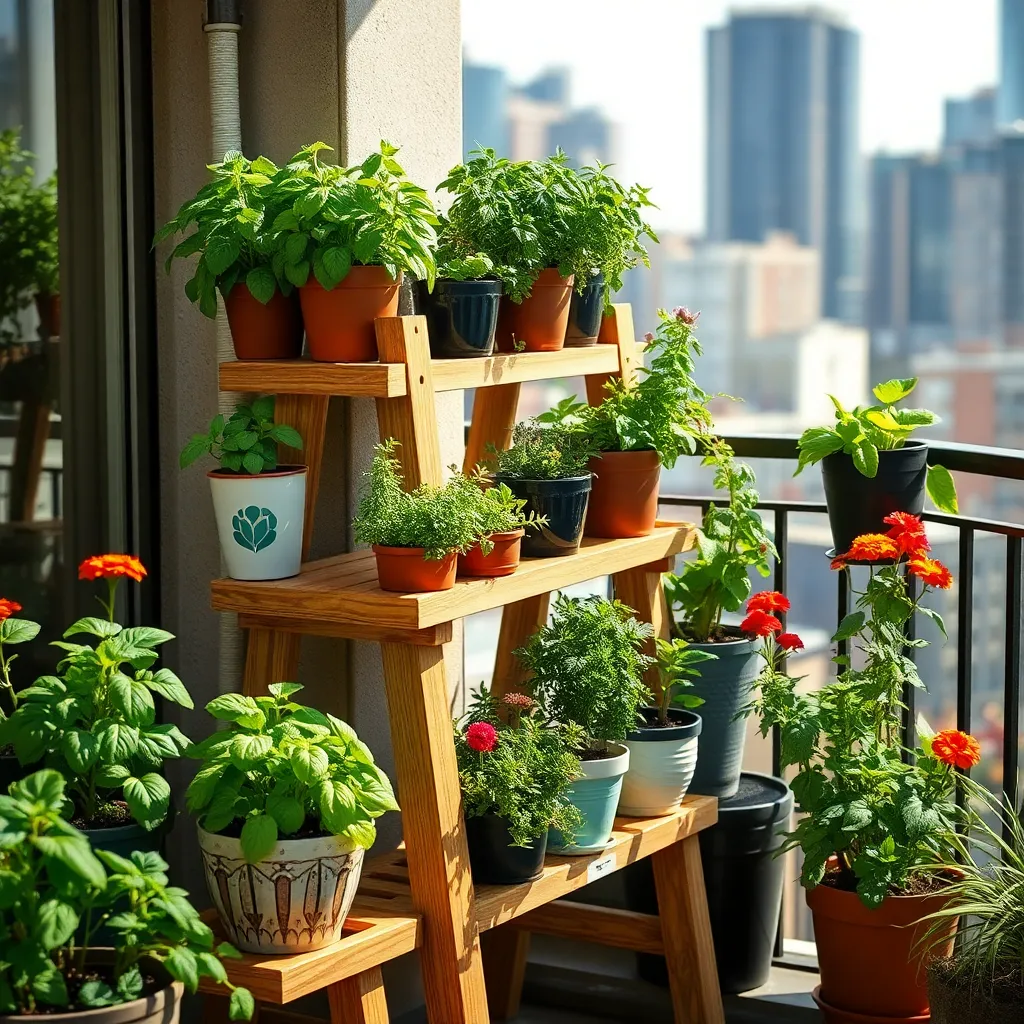
Utilizing multi-purpose plant stands is an excellent way to maximize vertical space in your apartment garden. These stands allow you to layer your plants, creating a visually appealing display while ensuring each one receives adequate sunlight.
Choose stands that are sturdy and can support the weight of your pots without tipping over. Opt for adjustable stands that can accommodate different pot sizes, which is especially useful if you plan to rotate plants seasonally.
Place taller plants, such as ferns or dracaenas, on the lower tiers and cascading species like spider plants or ivy on the top. This arrangement not only adds aesthetic appeal but also ensures that all plants get the appropriate amount of light and air circulation.
For those with limited sunlight, consider stands with wheels to easily move your plants to sunnier spots as needed. This flexibility ensures that even sun-loving perennials like lavender or geraniums can thrive indoors.
Select Perennials with Year-Round Appeal
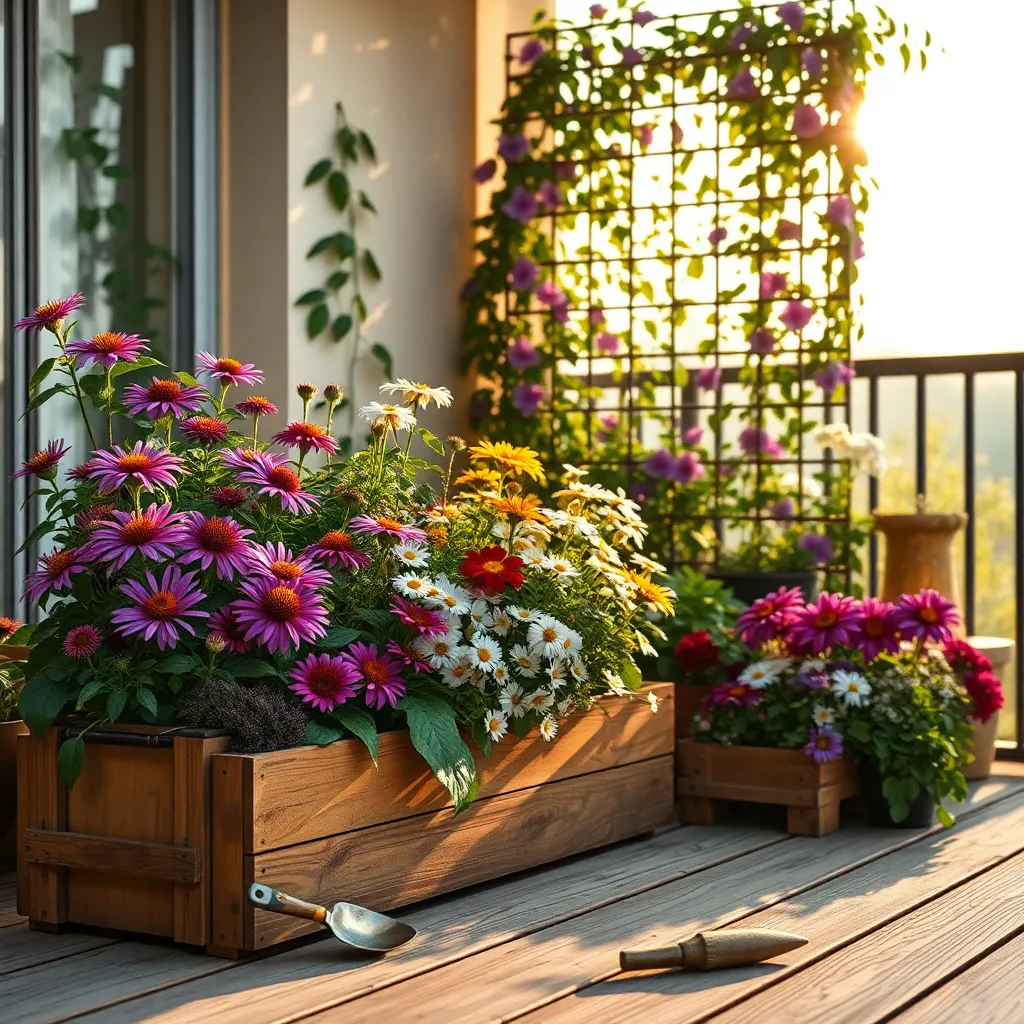
Choosing perennials with year-round appeal can transform your apartment garden into a vibrant oasis. These plants offer continuous interest, with flowers, foliage, or structure that change with the seasons, ensuring your space always looks lively.
Start with plants like Heuchera, which are known for their colorful foliage that remains bright even in winter. Place them in a spot with partial shade and well-draining soil to keep them thriving.
For a touch of elegance, consider the Hellebore, which blooms in late winter to early spring, offering a splash of color when little else is flowering. They prefer rich, well-drained soil and can thrive in both pots and garden beds, making them versatile for apartment settings.
To add a vertical dimension, incorporate sedum varieties that can spill over the edges of containers or climb compact trellises. These hardy plants require minimal watering and can tolerate drought, making them ideal for busy gardeners.
Rotate to Maximize Sun Exposure
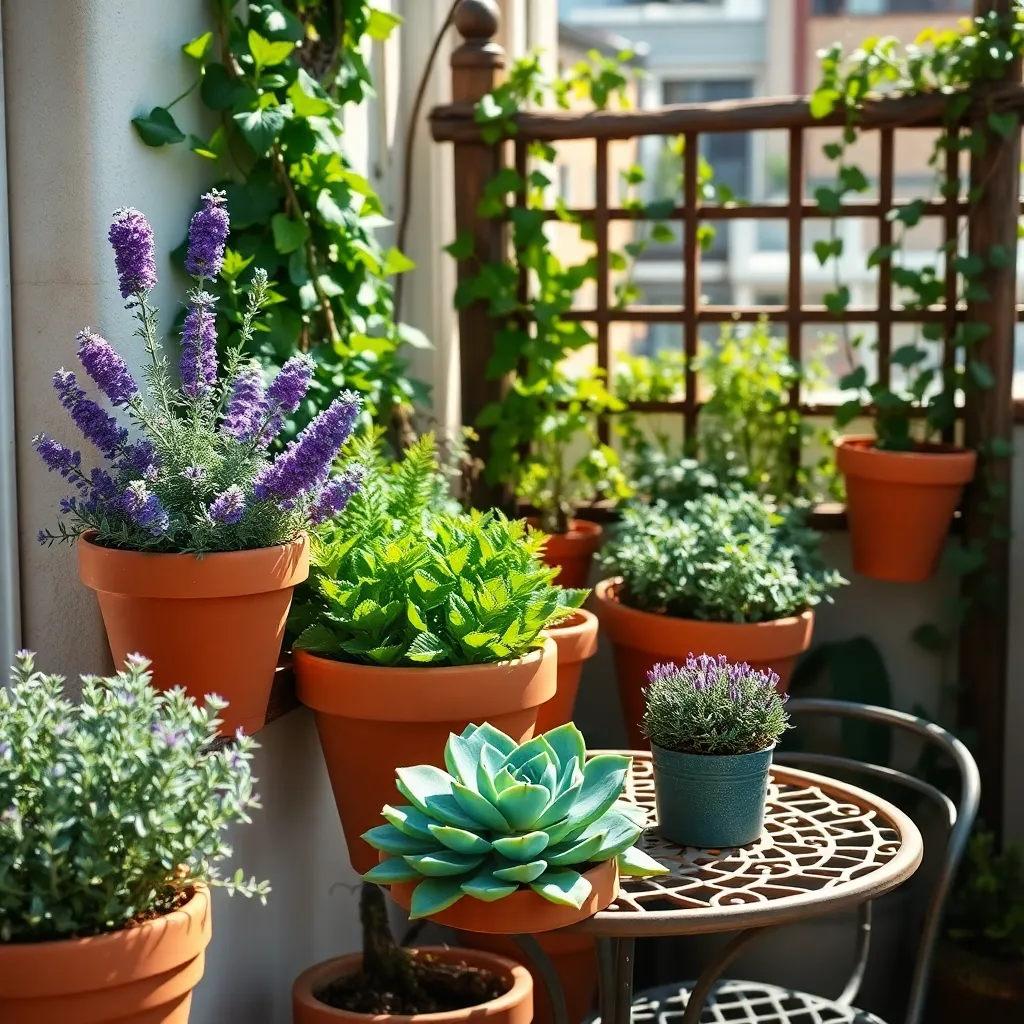
To maximize sun exposure in your apartment garden, regularly rotating your plants can be incredibly beneficial. This simple practice ensures that all sides of your plants receive equal sunlight, promoting even growth and preventing the development of lopsided foliage.
Every couple of weeks, gently rotate your potted perennials about 90 degrees. This not only helps in achieving balanced growth but also reduces the risk of pests and diseases by allowing air to circulate more freely around the plant.
It’s important to note that different perennials have varying sunlight requirements. For sun-loving perennials like lavender or rosemary, ensure they are placed in a spot that gets at least six hours of sunlight daily, rotating them to spread this exposure evenly.
Shadier varieties, such as hostas, benefit from being rotated less frequently, as they thrive in indirect light. Regardless of the type, always observe your plants for signs of distress, such as leaf burn or wilting, and adjust their rotation schedule accordingly to maintain their health.
Conclusion: Growing Success with These Plants
In summary, nurturing your relationship in a small space can be as refreshing as cultivating a perennial garden in your apartment. The seven key concepts we’ve explored — prioritizing quality time, creating a shared sanctuary, embracing open communication, finding room for individual growth, establishing healthy boundaries, planning regular check-ins, and cherishing small gestures — form the backbone of a thriving relationship, no matter the size of your living quarters.
To put these concepts into action, start today by selecting one idea to focus on, such as creating a cozy corner for uninterrupted conversations. This simple step can breathe new life into your relationship, transforming your space into a haven of love and connection.
Remember, relationships are a continual journey. Save or bookmark this article for future reference, ensuring these perennial ideas remain at your fingertips whenever you need a boost in your relationship garden.
Looking ahead, with dedication and creativity, your relationship can flourish in any environment. Each small effort you invest today is a seed of love, promising a bountiful harvest of joy, understanding, and lasting connection. Now is the perfect time to take action and nurture the beautiful relationship you desire.

